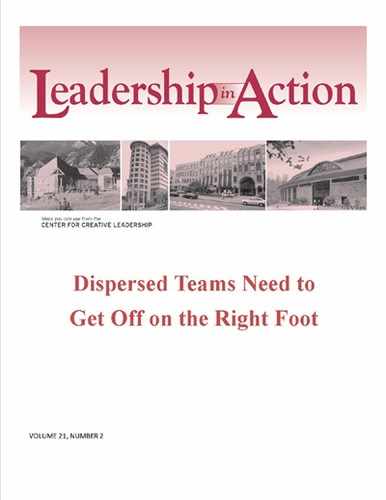GROWING PAINS
Another thread that emerged from our data related to members' perceptions of becoming and working as a team. GDTs were seen as both similar to and different from conventional teams in terms of teamwork. Some GDT members believed that dispersed teams and conventional teams have certain characteristics in common, such as interdependency, cooperation, and collaboration. Other GDT members believed that GDTs and conventional teams do not share these characteristics.
GDT members tended to believe that it was more difficult for them than for members of conventional teams to work as a unit and develop the synergy and cohesiveness needed for effective teamwork. A closely linked finding was communication difficulty—almost 75 percent of the teams indicated that communication within GDTs is generally more difficult, more complex, and more infrequent than communication within conventional teams, in addition to requiring more formal approaches.
One strand in this thread was the extent to which GDTs received any type of developmental assistance from their parent organizations. GDTs that received such assistance were more likely than those that did not to conduct electronic meetings and to rate them as being effective. These teams saw themselves as more collaborative. They had more disagreements, which were more likely to be about strategy. They also were less likely to note any impact on their work resulting from team members' being in different time zones.
A second strand in this thread was the importance of GDTs' first meetings, specifically the format and effectiveness of these meetings. We used three measures of first meeting effectiveness: clarity of team goals, the degree to which individuals felt like members of the team, and the degree of commitment individuals felt to the team after the first meeting.
GDT members whose first meetings were face to face were more likely than GDT members whose first meetings occurred electronically to indicate that they never or rarely met electronically as a group and were less likely to discuss business through conference phone calls. These GDT members also indicated that when they did meet electronically they spent a lower percentage of the meeting time on the task at hand. Time zones were less likely to affect GDTs that met electronically the first time.
There was a positive relationship between the effectiveness of the first meeting and the effectiveness of subsequent meetings, whether face to face or electronic. The effectiveness of first meetings also had a positive influence on collaboration in terms of team members relying on one another, but the influence on strategic conflict and overall team effectiveness was mixed.
Teams with members who didn't know why they were selected were less likely to be effective.
One important aspect of the first meeting was goal clarity. GDTs whose first meetings produced clear goals were more likely to have strategic conflicts and to be effective. Interestingly, the degree of commitment to the team that individuals felt after an initial meeting had a negative correlation with strategic conflicts and team effectiveness.
